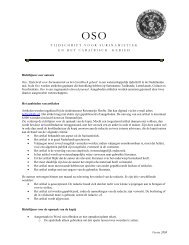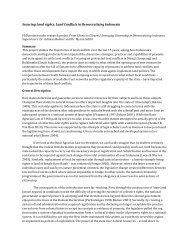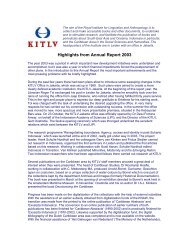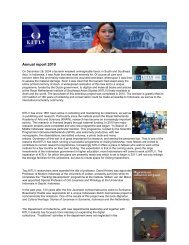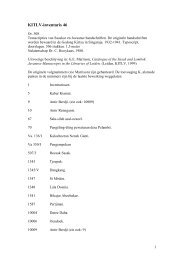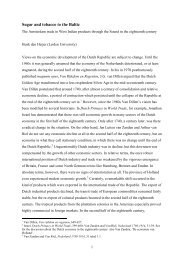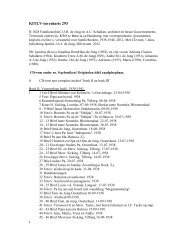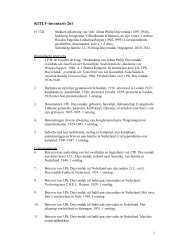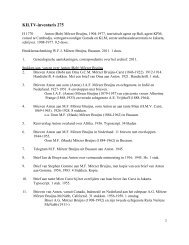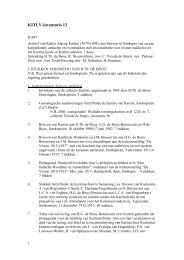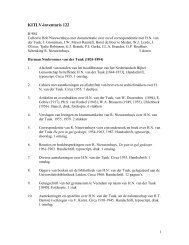The Acehnese past and its present state of study R. Michael ... - kitlv
The Acehnese past and its present state of study R. Michael ... - kitlv
The Acehnese past and its present state of study R. Michael ... - kitlv
You also want an ePaper? Increase the reach of your titles
YUMPU automatically turns print PDFs into web optimized ePapers that Google loves.
CHAPTER II<br />
Aceh as a fi eld for ancient history studies<br />
Introduction 1<br />
Daniel Perret<br />
Aceh has played a very important role in the history <strong>of</strong> the Indian Ocean<br />
due to <strong>its</strong> geographical situation. A relatively rich corpus <strong>of</strong> written sources<br />
enables us to reconstruct part <strong>of</strong> the history <strong>of</strong> two major sultanates in this area:<br />
fi rst, that <strong>of</strong> Samudra-Pasai between the end <strong>of</strong> the thirteenth century <strong>and</strong> the<br />
beginning <strong>of</strong> the sixteenth century; thereafter, that <strong>of</strong> the Sultanate <strong>of</strong> Aceh<br />
<strong>its</strong>elf. This corpus contains information on the links between this area <strong>and</strong><br />
other regions along the Indian Ocean littoral. <strong>The</strong> Hikayat Raja Pasai – a Malay<br />
text dated to the end <strong>of</strong> the fourteenth century or the beginning <strong>of</strong> the fi fteenth<br />
century (Braginsky 2004:11) – makes mention <strong>of</strong>, for example, the arrival in<br />
Pasai <strong>of</strong> trading ships from Kling, that is, southeastern India, during the reign<br />
<strong>of</strong> Sultan Malikul Saleh (Jones 1999:21), whose epitaph indicates that he died<br />
in 1297 CE. A tradition reported by the Portuguese, Tomé Pires, also suggests<br />
the presence <strong>of</strong> an infl uential community <strong>of</strong> people from Bengal, who settled<br />
in the area by the mid-fourteenth century (Cortesão 1990:142). Furthermore it<br />
is known that the port <strong>of</strong> Pasai was visited by Kerala traders at the beginning<br />
<strong>of</strong> the fi fteenth century (Bouchon 1979:129). In addition to this we know <strong>of</strong> a<br />
link between Pasai <strong>and</strong> Gujarat because <strong>of</strong> 12 funerary monuments made <strong>of</strong><br />
richly-carved white marble found in Pasai. <strong>The</strong>se monuments were exported<br />
from Cambay, where they were carved, although additional inscriptions<br />
in some instances may have been added in Pasai. Most, if not all, <strong>of</strong> these<br />
monuments date to the fi fteenth century (Cowan 1940:17; Lambourn 2003a,<br />
2003b, 2004:217, 219; Moquette 1912). Documentary evidence regarding the<br />
presence <strong>of</strong> Indian Ocean peoples in the Aceh region increased from the<br />
sixteenth century. In addition to providing us with information about traders,<br />
foreign sources from this period sometimes contain other valuable details,<br />
1 I am very grateful to Wayne Bougas for his help in editing the initial English language draft<br />
<strong>of</strong> this chapter.




